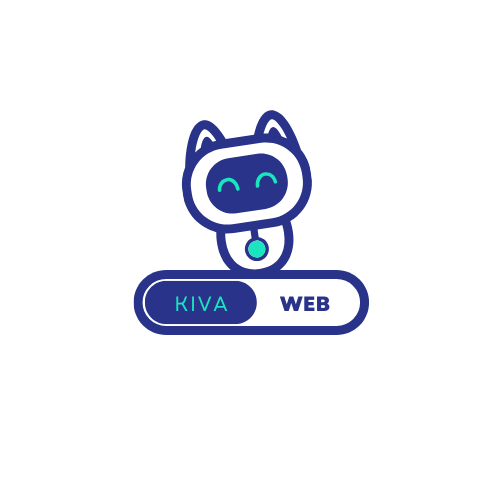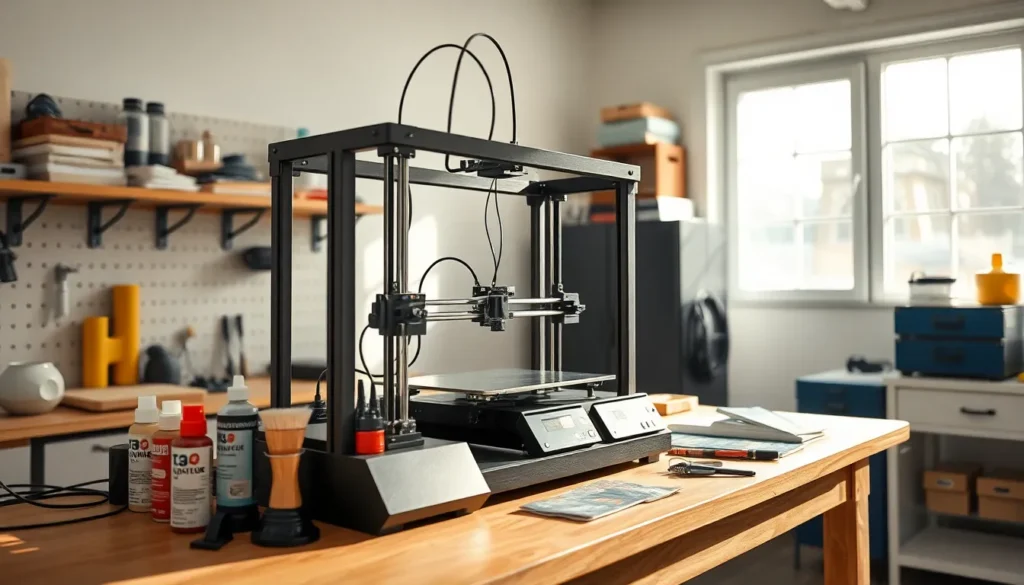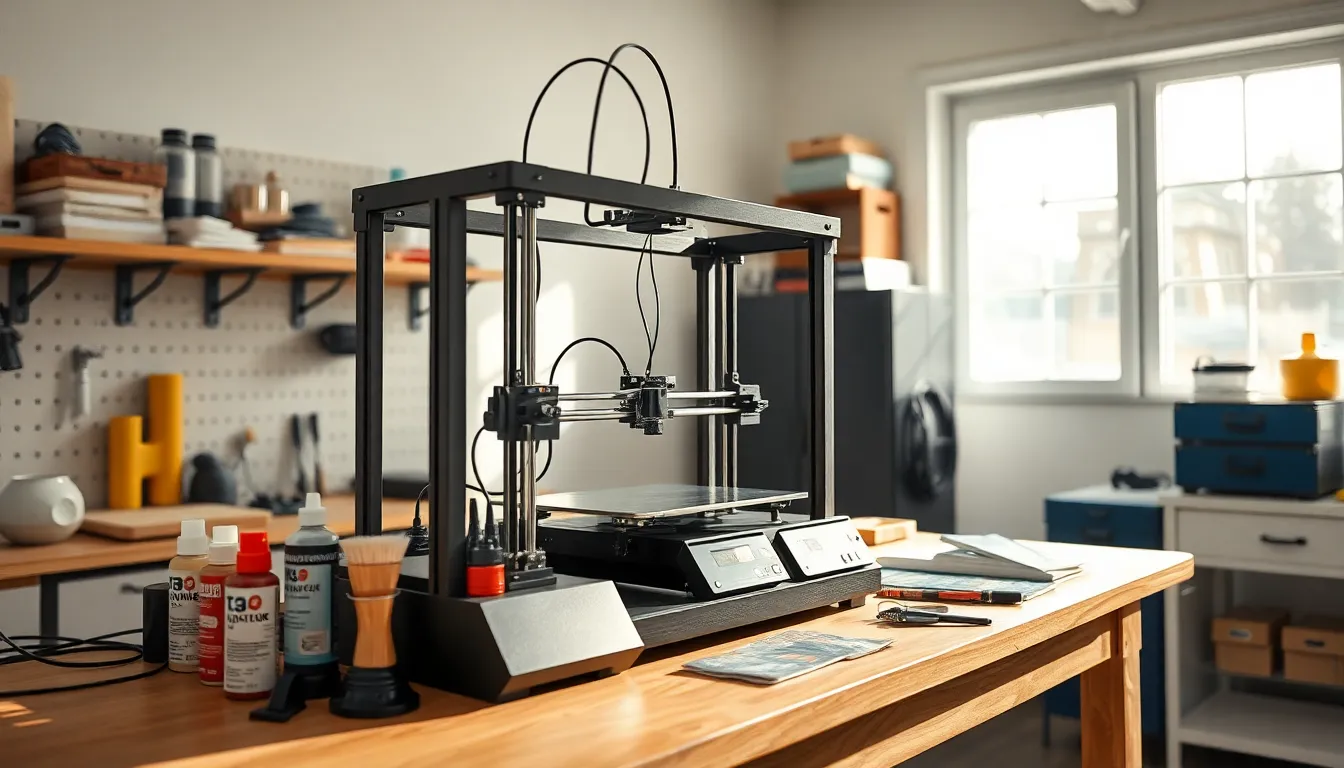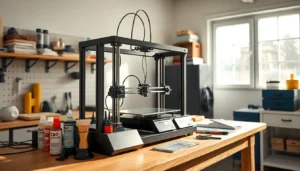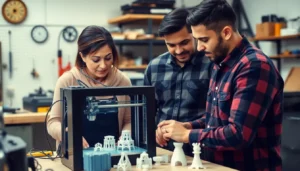3D printers have revolutionized creativity, turning dreams into tangible objects faster than you can say “layer adhesion.” But like a pet rock, they need a little TLC to keep functioning at their best. Neglecting maintenance can lead to clogs, misalignments, and a whole lot of frustration—like trying to assemble IKEA furniture without the instructions.
Imagine your 3D printer as a high-maintenance diva. It demands attention, but once you give it the love it deserves, it rewards you with flawless prints and endless possibilities. Whether you’re a seasoned pro or just starting your 3D printing journey, mastering maintenance is essential. Get ready to dive into the world of upkeep, where a few simple steps can save you time, money, and the sanity you thought you lost during that last failed print.
Table of Contents
ToggleImportance Of 3D Printer Maintenance
Maintaining a 3D printer is crucial for ensuring peak performance. Regular upkeep minimizes issues such as clogs, misalignments, and inconsistent print quality. Effective maintenance procedures lead to enhanced reliability and longevity for the printer.
Skilled users recognize the value of routine checks. Cleaning extruders and nozzles helps prevent blockages that disrupt the printing process. Additionally, checking for misalignments preemptively addresses potential print inaccuracies.
Investing time in maintenance leads to cost savings over time. Neglecting 3D printer care often results in expensive repairs or replacements. A well-maintained printer produces consistent, high-quality prints, making maintenance a priority for professionals and hobbyists alike.
Using high-quality materials contributes to better maintenance outcomes. Filaments with impurities can intensify wear on the printer’s components. Selecting filaments with less dust and moisture helps ensure optimal performance.
Familiarity with the printer’s mechanical components aids in preventive actions. Understanding which parts occasionally require lubrication or adjustment enhances a user’s experience. Users become more confident in their ability to troubleshoot common problems through regular maintenance.
Simplifying maintenance tasks fosters a more enjoyable 3D printing experience. Establishing a maintenance schedule makes it easier to stick to essential tasks. Documentation of maintenance activities can serve as a reference for best practices in the future.
Prioritizing 3D printer maintenance ensures a seamless printing journey. Regularly attending to the equipment reflects professionalism and commitment to quality. A well-cared-for 3D printer ultimately leads to successful projects and satisfied users.
Common Issues In 3D Printers
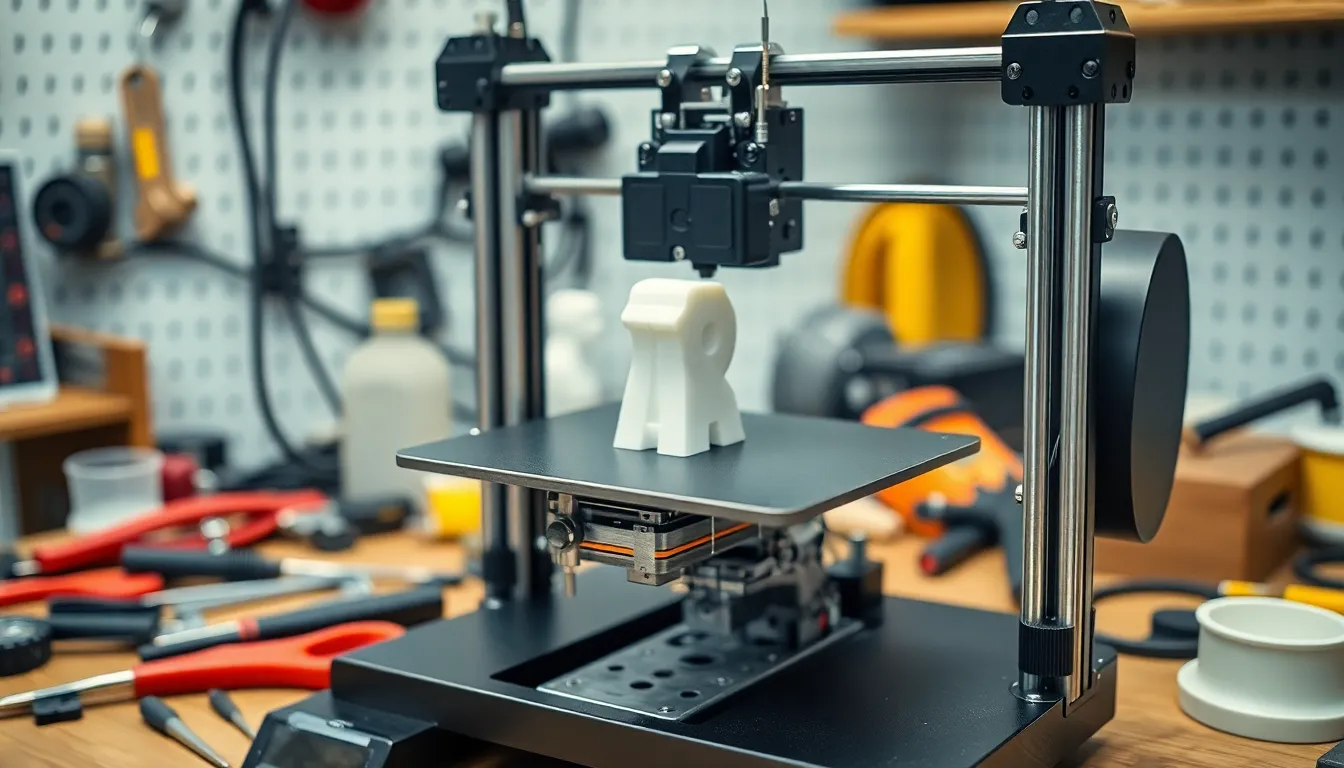
3D printers encounter various issues that can affect performance. Identifying and addressing these common problems helps maintain efficient printing.
Mechanical Problems
Mechanical problems often arise during 3D printing. Misalignment of axes can lead to layer shifts and warped prints. Clogged nozzles frequently create under-extrusion, resulting in incomplete layers. Users may also notice worn-out belts affecting movement accuracy. Uneven bed leveling contributes to adhesion issues, causing prints to fail. Regular maintenance allows users to troubleshoot and fix these mechanical concerns quickly.
Electrical Issues
Electrical issues can disrupt the printing process as well. Malfunctioning stepper motors often prevent precise movement of the print head. Faulty connections or damaged wiring can lead to erratic behavior or complete failure. Power supply problems might cause the printer to shut down unexpectedly. Additionally, firmware glitches can result in incorrect settings and failed prints. Regularly checking electrical components helps users identify these issues early and ensure smooth operations.
Essential Maintenance Tasks
Maintaining a 3D printer requires attention to specific tasks that optimize performance. Regular upkeep prevents issues and enhances print quality.
Regular Cleaning Routines
Cleaning routines play a crucial role in maintaining print quality. Users should clean the printer’s nozzle and extruder regularly to prevent clogs. A simple wipe of the print bed ensures proper adhesion for successful prints. Checking the cooling fans for dust buildup helps maintain performance efficiency. Additionally, cleaning the filament path eliminates any debris that could affect feed consistency. Regular inspections and cleaning lead to smoother operations and prolong the printer’s lifespan.
Lubrication Practices
Lubrication practices ensure smooth movement of mechanical parts. Users must periodically apply lubricant to linear rails and rods to avoid wear. Selecting the right lubricants, such as PTFE or silicone-based options, minimizes friction in moving components. Regularly checking the belts for tension and wear prevents misalignment during prints. Applying lubricant to the lead screws will enhance performance and accuracy. Prioritizing these lubrication tasks helps maintain optimal functionality throughout the printer’s use.
Troubleshooting Tips
Troubleshooting enhances performance and ensures efficiency. Identifying issues promptly leads to smoother operations.
Identifying Problems
Users often encounter several common issues while using 3D printers. Misalignment of axes usually results in skewed prints. Clogged nozzles typically cause the extruder to halt, disrupting the flow of material. Uneven bed leveling affects adhesion, leading to print failures. Additionally, worn-out belts can cause slipping, resulting in inaccurate layers. Regularly monitoring these components helps in early problem detection.
Steps To Resolve Issues
Resolving issues involves systematic approaches. First, users should check for misalignments, adjusting axes accordingly. Cleaning clogged nozzles often restores flow; using a needle or cleaning filament can help. For bed leveling problems, recalibrating the print surface ensures proper adhesion. Replacing worn-out belts with new ones improves layer accuracy. Finally, conducting electrical checks on connections often addresses power supply issues. Implementing these simple steps can significantly enhance the printing experience.
Conclusion
Maintaining a 3D printer is crucial for achieving top-notch results and extending its lifespan. Regular upkeep not only prevents common issues but also enhances overall performance. By dedicating time to maintenance tasks users can enjoy a smoother printing experience and avoid costly repairs down the line.
Establishing a routine for cleaning and checking components fosters reliability and consistency in print quality. With the right practices in place users can confidently tackle any challenges that arise during the printing process. Prioritizing maintenance reflects a commitment to excellence and paves the way for successful projects. Embracing these practices ensures that every print is a step towards mastery in the world of 3D printing.
